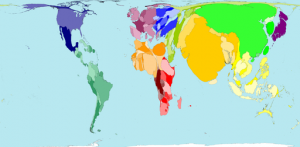[An updated treatment of some of this material appears in Chapter 8 of the Energy and Human Ambitions on a Finite Planet (free) textbook.]
I’ve been maintaining “radio silence” for a while—mostly on account of an overflowing plate and several new new hats I wear. All the while, I have received a steady stream of e-mail thanking me for Do the Math, asking if I’m still alive, and if so: what do I make of the changing oil situation? Do I still think peak oil is a thing?
Let’s start with the big picture view.
I was wrong about everything. Oil is not a finite resource: never was and never will be. We will employ new technologies and innovate our way into essentially perpetual fossil energy. We’ve only scratched the surface in exploration: there are giant deposits (countless new Saudi-Arabia-scale fields) yet to be discovered). The shale oil tells us so—and it won’t stop there. Shale first, then slate, marble, granite: just squeeze the frack out of rocks and we’ll get oil. Meanwhile, whole new continents are being discovered, rich with resources. The most recent was hiding behind Australia. And naturally it doesn’t stop there. We have now discovered thousands of planets just a hop away, most of which are likely to contain fossil fuels of their own. So game over for the resource limits crowd, yeah?
Views: 4693







